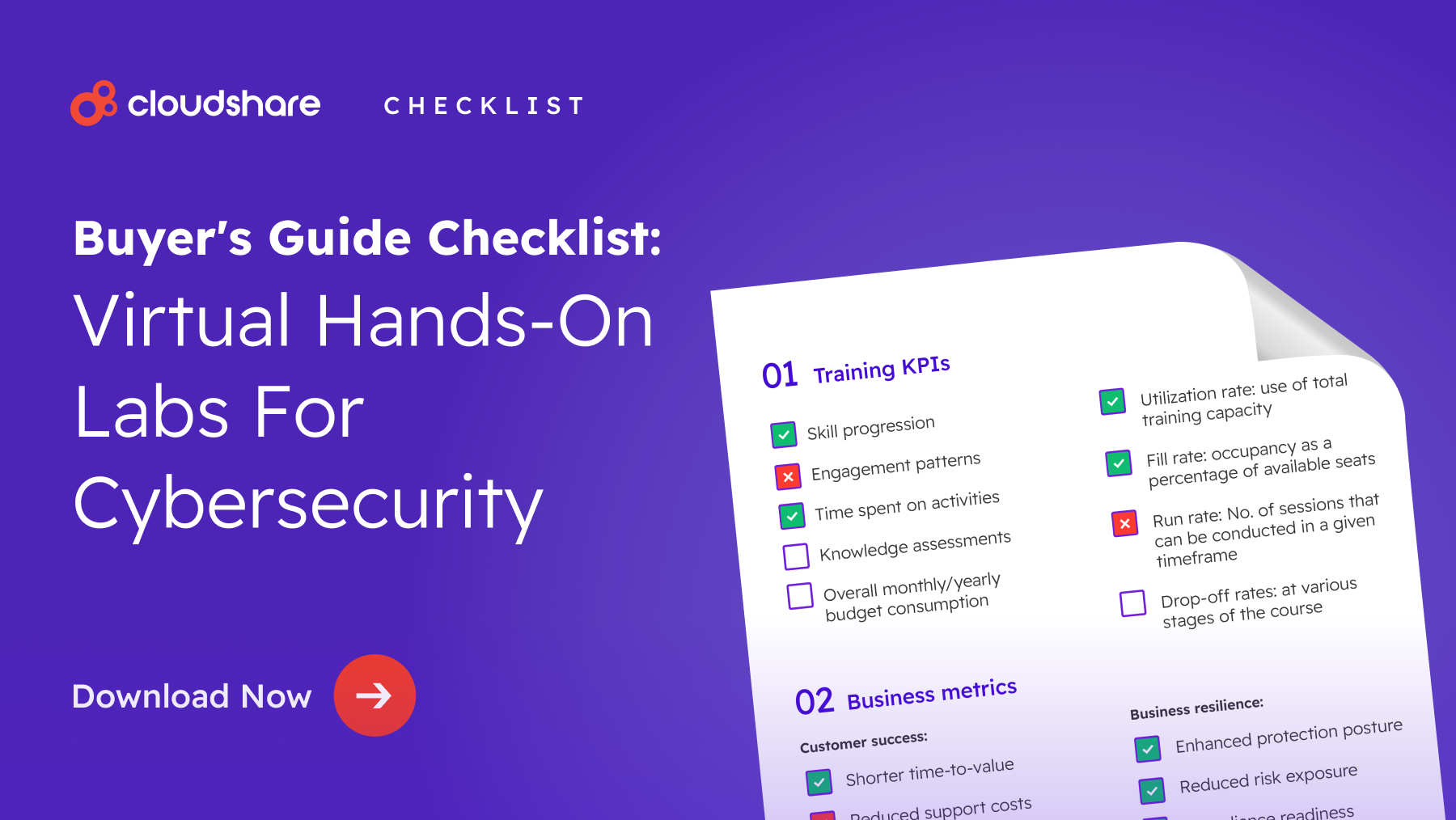
User and customer education is a vital step toward maximizing the value of your company’s software solutions. There are many reasons why companies are turning to learning management system (LMS) virtual labs to streamline training, customer onboarding, and other procedures.
Employees can take full advantage of program features when they have extensive experience using the software. Business partners may develop a better understanding of how your business’s internal software runs, how it will impact their organization, and how it will help them solve their problems.
Teaching customers how to use your own software products effectively not only increases trust, but it boosts your sales too because customers are more likely to purchase software they are familiar with.
It’s no wonder why enterprises as large as Microsoft and Google, and even smaller companies in the technology sector, rely so heavily on software training and education. One recent development has simplified access to training and education by making it more accessible, convenient, and cost-effective. That development is virtual training labs with LMS integration.

The Basics of Virtual Labs & LMS Integration
LMS integration allows its users to interact with code, features, programs, and operating systems directly from a web browser. This method of instruction, enabled by technological advancements in cloud-based infrastructure, provides a dynamic online learning environment far more convenient than traditional classroom-style lessons.
After successfully implementing LMS virtual lab integration into your business’s employees, partners, and customers, you can expect:
- More knowledgeable, productive, and confident employees
- Better knowledge retention for individuals who engage with your LMS
- Your organization to provide effective training to customers, partners, and even employees
- Increased customer satisfaction
- Motivation for customers to take full advantage of your software’s features in a personalized learning environment
Cloud-based LMS systems are designed to provide additional flexibility and accessibility to your customers and partners. They allow you to create customized training plans that fit the needs of your individual client and which your clients can access from anywhere in the world.
What Are the Tangible Benefits of LMS Virtual Labs
Why are many companies looking to transition to virtual labs over traditional on-site labs? There are several reasons why the virtual classroom is the future of training for not only the business sector, but also education in general.
We’ve concluded that the three main factors backing this changing trend include cost, convenience, and control.
Cost
On-site training laboratories are expensive to build, maintain, and use. Equipment needs to be ordered and installed, and each participant must allocate time in the schedule to attend class. Aligning everyone’s schedules is a challenge that can waste time and other valuable resources.
Cloud-based LMS enables employees and customers to interact with the material from anywhere in the world. Instructors can assess progress, make informed decisions based on analytics, and provide additional support as needed to individual participants.
Companies can also expand the capabilities of their LMS system by adding additional resources as needed. This allows a company to only pay for the resources that they actually use.
Convenience
Virtual LMS platforms take advantage of the cloud. This added convenience makes them accessible from any location and with any device through an internet connection, removing the need for travel costs. Valuable resources and guides can be posted online as well so that instructors, employees, and consumers alike can choose to study the material at their own pace.
Control
LMS systems are centralized using a single (often third-party) network. Your company can maintain full control over the simulation and how your employees learn. For example:
- Keeping the lessons up to date with current technologies is easy since software and hardware upgrades are cheaper for virtual labs.
- Have more employees or customers wanting to join? LMS virtual labs can be expanded to accommodate additional participants without the need to purchase additional computers, servers, and other costly equipment.
- Communicating and providing feedback is instant through the cloud. Use this advantage to expedite the learning process and fine-tune the lessons towards your organization’s goals.
Why Your Business Needs Virtual Labs & LMS Integration
There are multiple ways why the integration of an e-learning platform can improve customer onboarding, employee knowledge retention, and your overall customer service satisfaction scores.
When businesses use complex internal software, they can create training labs in the cloud for customers and partners to experience the software. This way, they can experience simulated scenarios that they might encounter in the real workplace.
Letting a customer play around with your new software product will help them get familiar with its features and allow you to track what their preferences are, as well as any issues they might have with your product.
Integrate Your Cloud-Based LMS Today
Cloud technology has changed the way we approach many of our favorite software applications. More and more companies are making the jump to the software as a service (SaaS) model.
But with changes like that, companies must find innovative new ways to cater to the needs of their customers. LMS virtual labs are an agile method that many companies are using to cut costs and improve the user experience.
Get a free Demo ->



